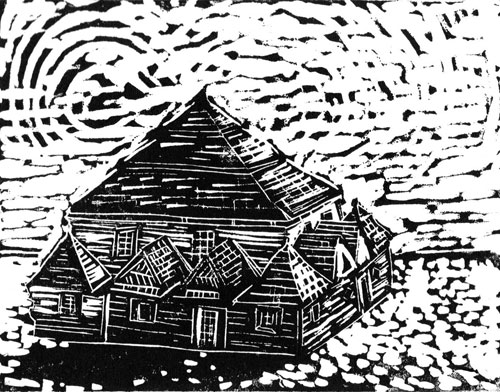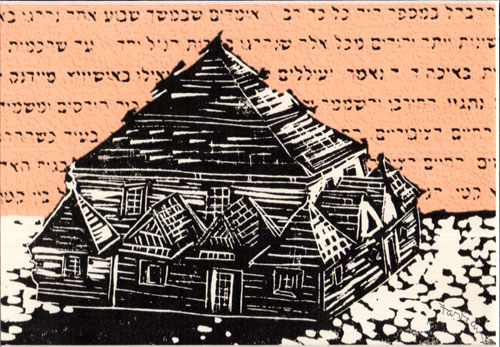Lost Treasures: The Wooden Synagogues of Eastern Europe The Artwork of Bill Farran
Wyszokie Mazowieckie, Poland - Original Linocut
Wyszokie Mazowieckie, Poland - Original Linocut
Wysokie Mazowieckie is a small town west of Bialystok. The settlement was first documented in 1239 and received town status in 1502. A Jewish population was first noted in the 17th century. By the second half of the 19th century the Jews had become the majority of the town’s citizens.
The beautiful synagogue of Wysokie Mazowieckie was built between the end of the 17th century to the beginning of the 18th century. We know what the synagogue looked like from the research and drawings of Zygmunt Gloger, a Polish historian, archaeologist, geographer, and ethnographer. Over the years, the wooden synagogue deteriorated beyond repair and was dismantled in 1800. A new modern stone synagogue was built to replace it in 1879.
In August 1941 during the German occupation, Wysokie Mazowiecki’s Jewish population was sent to a ghetto where they remained until its liquidation on November 2, 1942. From there, the town’s remaining two thousand Jews were sent to the Zambrow camp and finally to Auschwitz in January 1943.
Purchase a print
Original linocut prints are 8x10 inches, and are available either unmatted or in an 11x14 matte.
I also offer matted 5x7 digital prints. These prints are created from high-res digital images and come in an 8x10 matte.
For this synagogue I have created an additional digital print, with Hebrew lettering in the background. These prints are also created from high-res digital images and come in an 8x10 matte.



